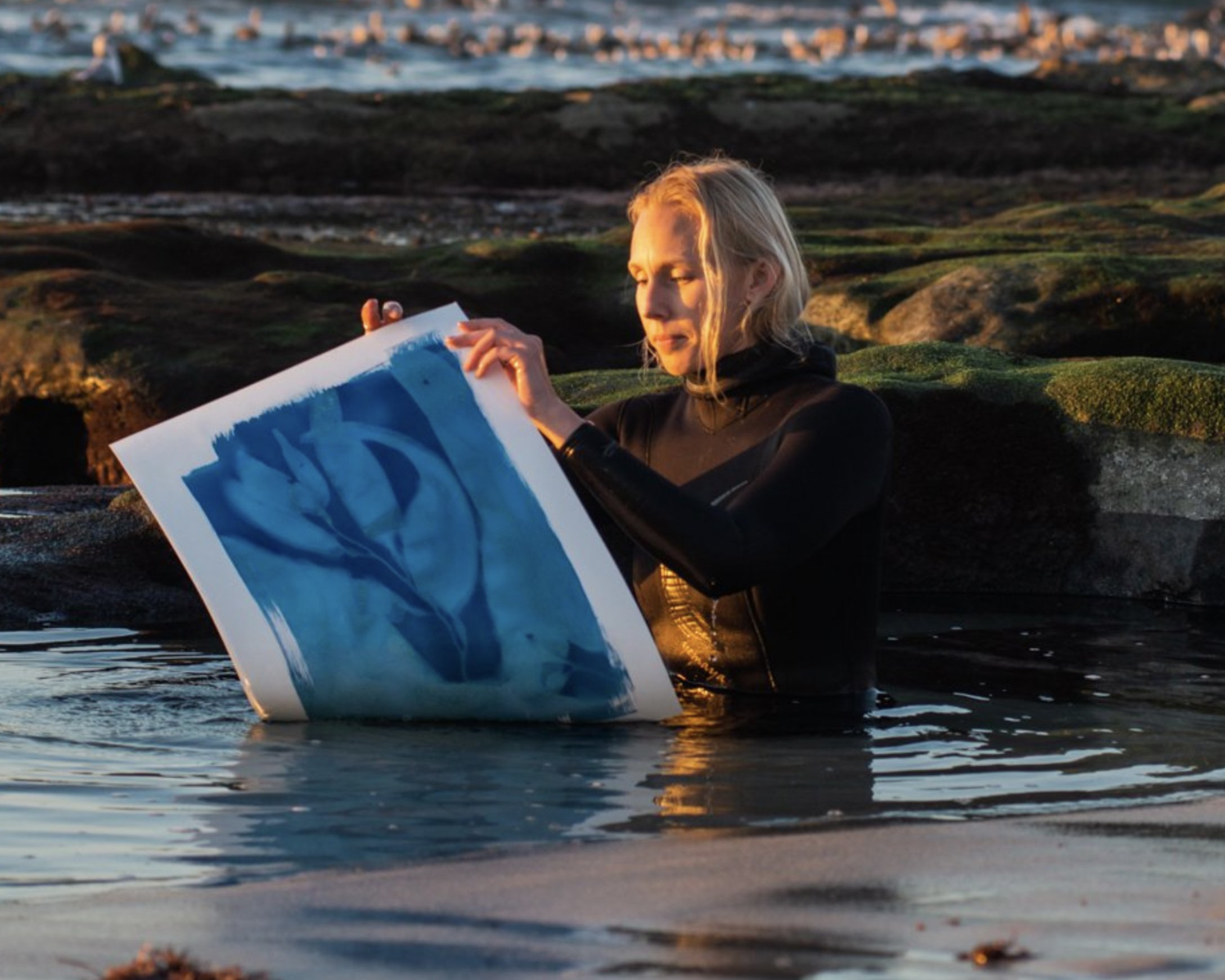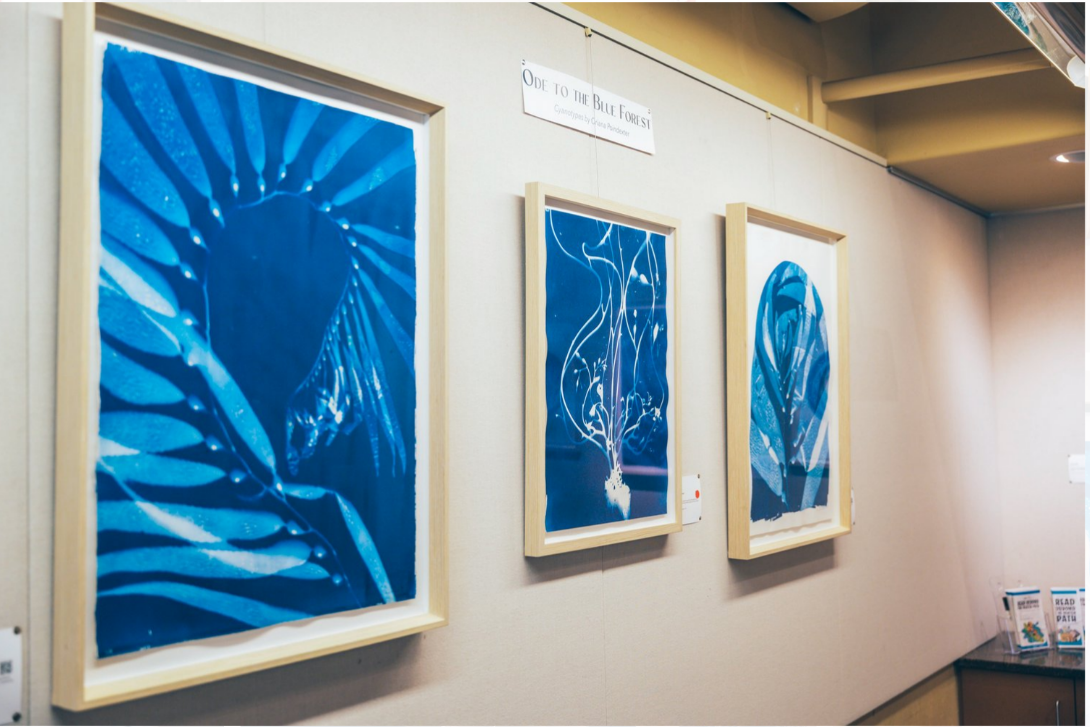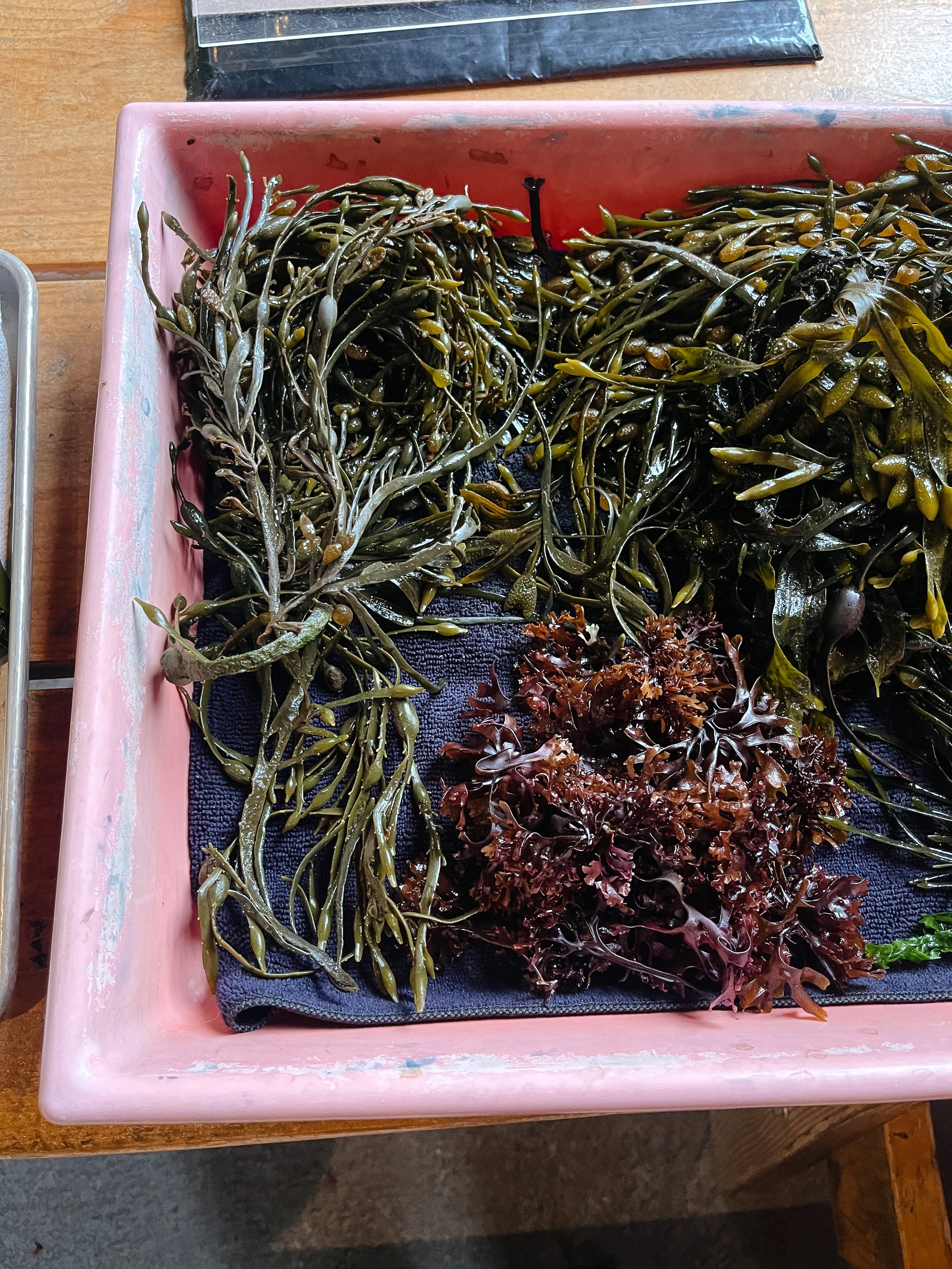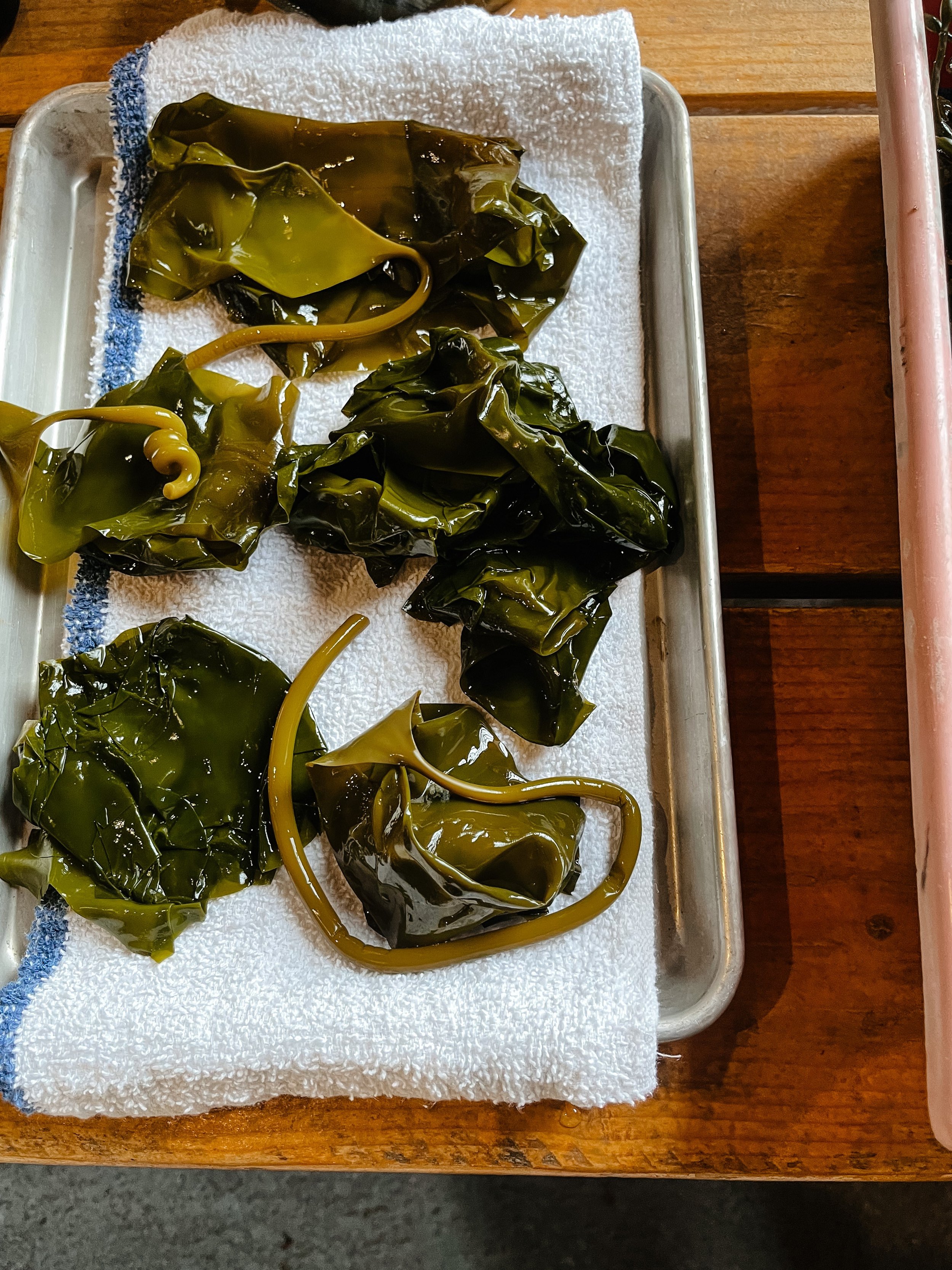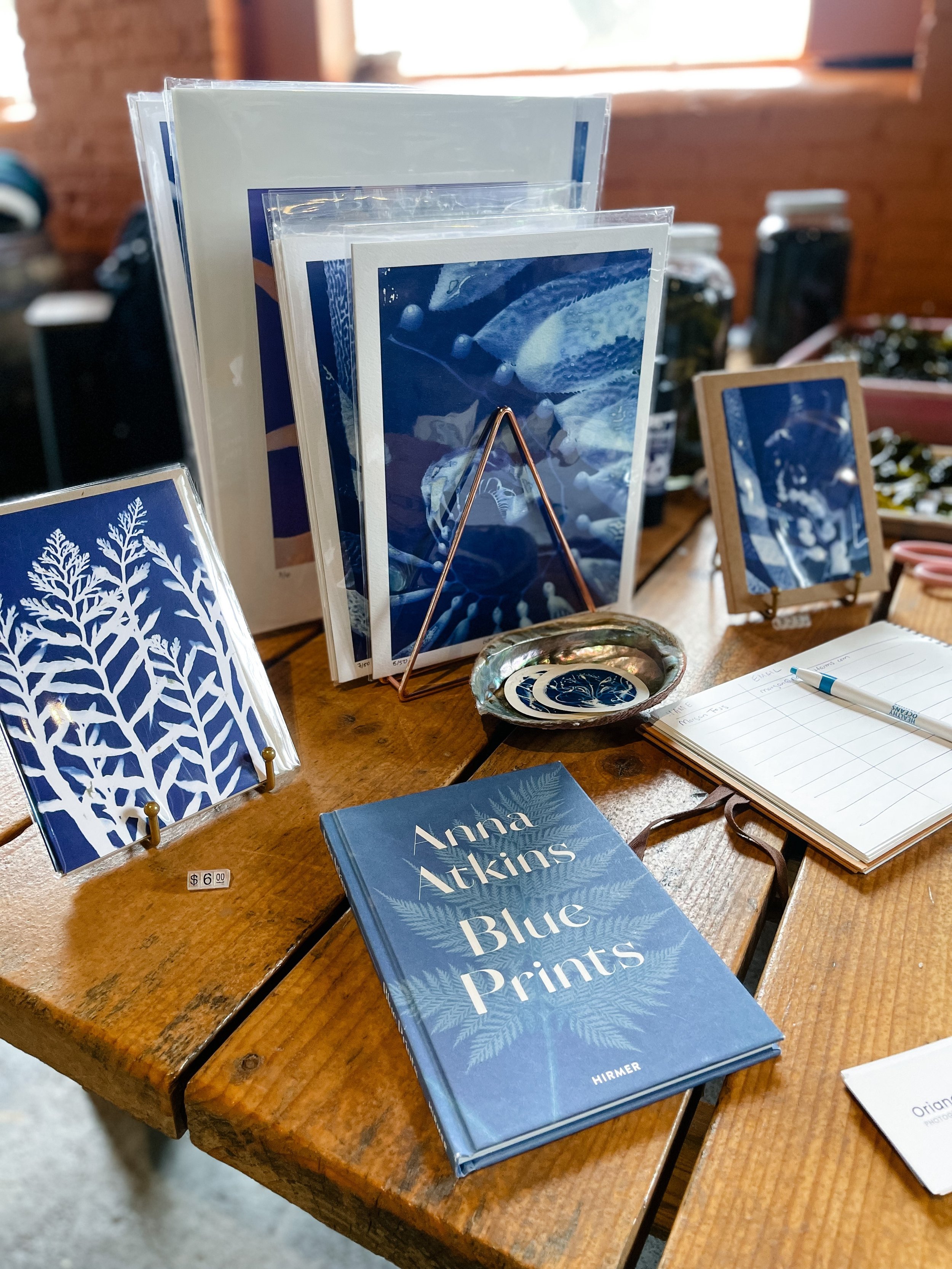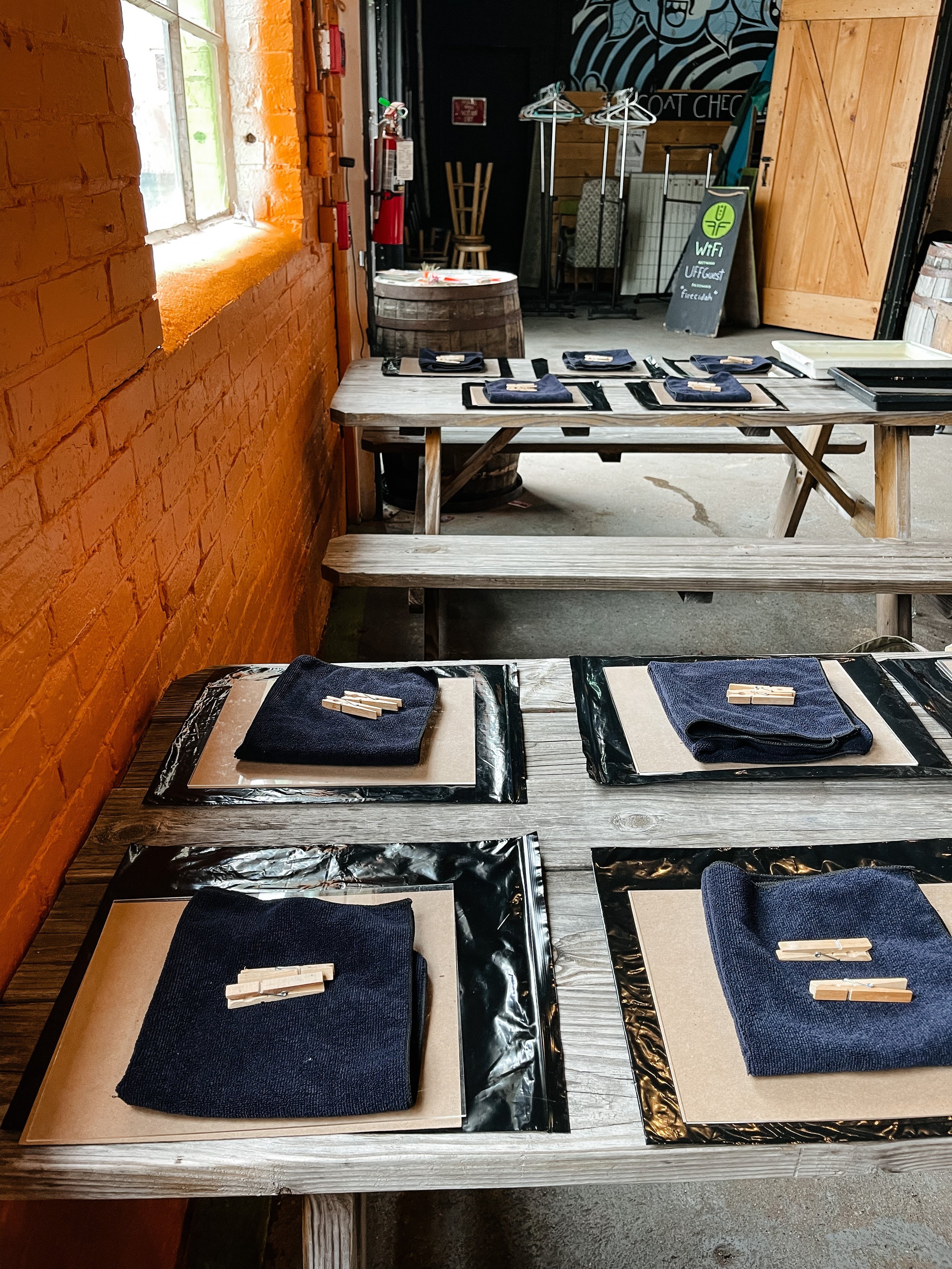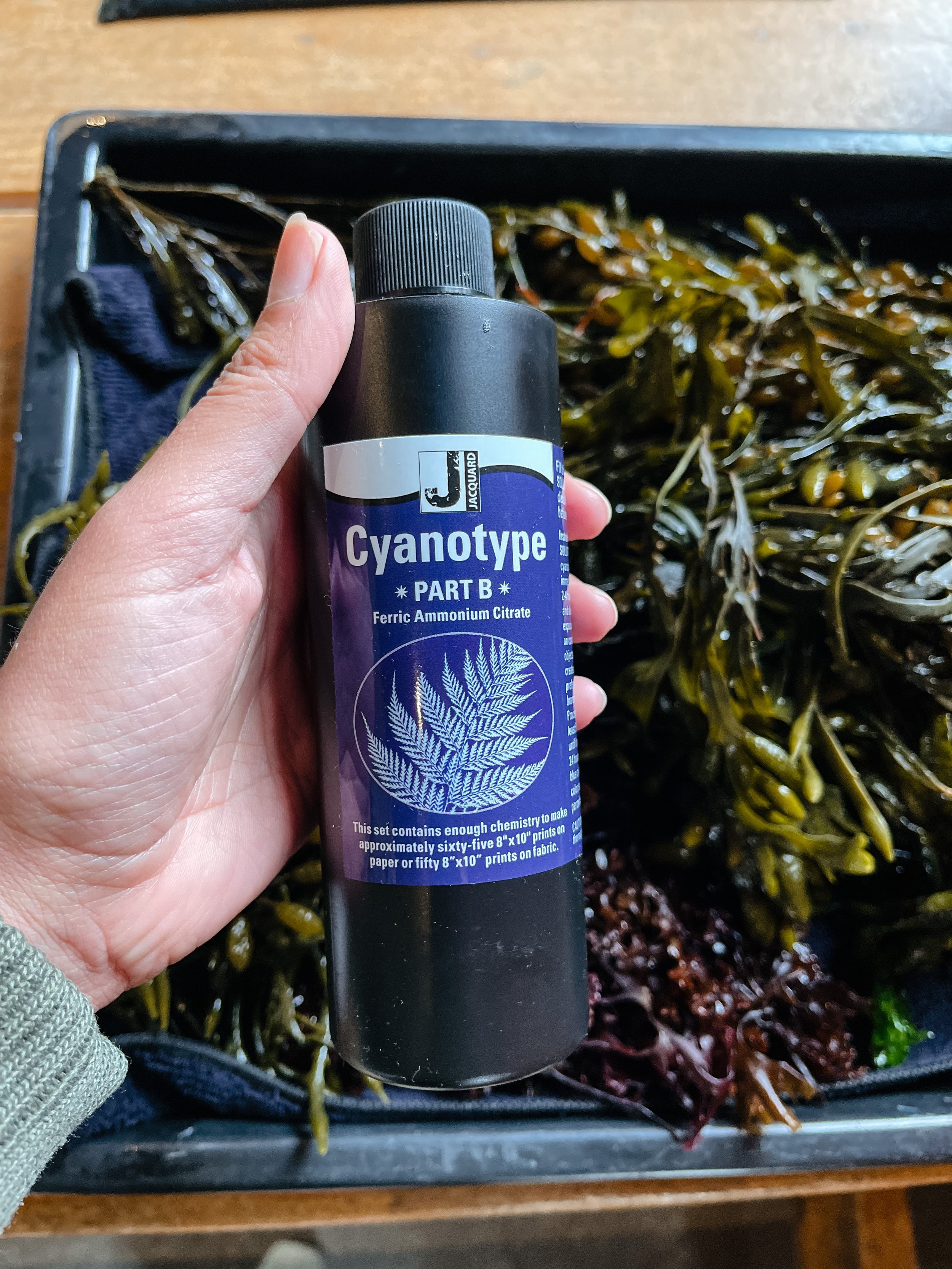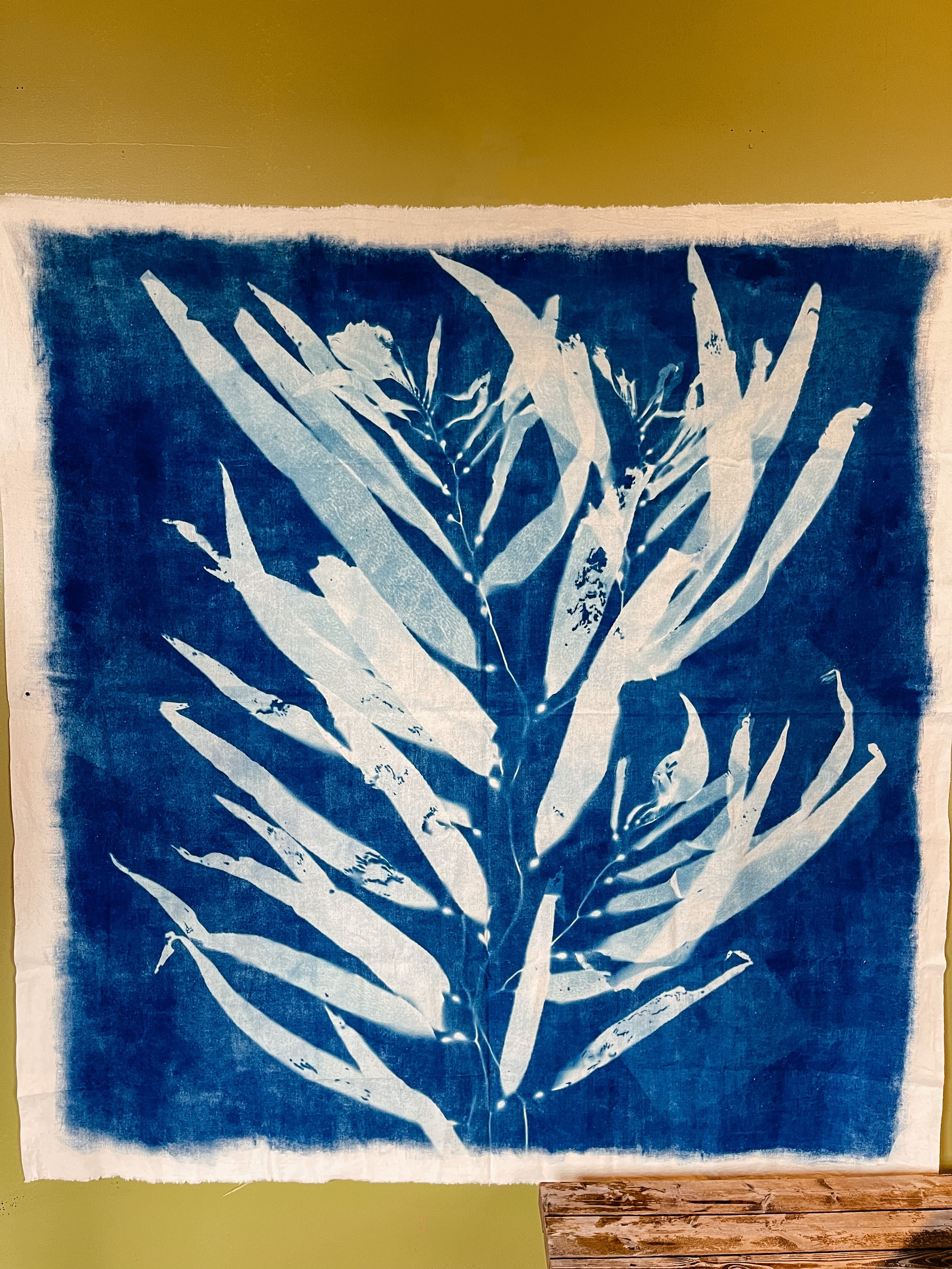Making Seaweed Cyanotypes with Oriana Poindexter
Inspired by the kelp forests off the coast of her native California, Oriana Poindexter uses sun and sea to create beautiful cyanotypes that embody the intersection between art and science.
Cyanotype, or sun printing, is a photographic process that dates back to 1842. It was used by botanist Anna Atkins to create the first book ever to be illustrated by photography. To create a cyanotype, a light-sensitive emulsion of two non-toxic iron salts is brushed onto paper, and an object, such as a piece of seaweed, is laid over the paper, creating a shadow. The print is then developed in water, revealing the image created by the shadow of the subject. The resulting prints are records of the ocean on that particular day, drawn in the blues and whites of the sea itself.
Oriana Poindexter has been experimenting with cyanotypes for several years. The process allows her to record her subjects, usually massive pieces of giant kelp from the forests that bob beneath the ocean's surface near her native Southern California. But if you peruse her website, you'll find that Oriana's cyanotype work extends beyond kelp – from shells, to bone, to feathers from faraway lands like Antarctica. As a marine scientist and free diver, the cyanotype is the perfect fusion of art and science.
Oriana's cyanotype prints have gained national recognition, from features in the Getty Museum, to several nods in the Wall Street Journal. Recently, Oriana has been teaching a series of cyanotype workshops to share her passion and awe for the ocean and all of its creatures.
Oriana Poindexter: Inspiring Awe of the Sea Through Art and Science
Oriana Poindexter is one of those people who becomes even more impressive the more you speak with her. Chatting with Oriana was like sitting on a beach watching the waves roll in – each ebb and flow of conversation brought about new waves of insight, experiences, and goals that was truly inspiring. Oriana's interests are the harmonious blend of art and science that is evident in all of her work. In fact, before I even met her in person, she asked me where the best spots were in Portland to watch fresh fish being brought in to be processed on the working waterfront because she "loved taking photographs of the production process."
I was instantly sold.
Oriana's resume is loaded with fascinating achievements, all of which are exciting intersections of art and science. A high school darkroom class sparked Oriana's initial interest in photography. Growing up in Laguna Beach, California, the ocean was an obvious subject for her work. She went on to earn her Bachelor's degree in Visual Arts from the prestigious Princeton University. Oriana returned to California to attend the Scripps Institution of Oceanography. Her coursework at Scripps opened up the ocean to her not only in an artistic capacity, but also in an acadmic and professional one as well.
Oriana went on to work for nearly a decade with academic institutions, government agencies, and environmental organizations as an expert in the sustainable seafood and fisheries management arenas. She held a coveted position as a marine scientist for NOAA, with a focus on sustainable fisheries and international seafood economics. Oriana shared that she helped develop a program which explored opportunities for San Diego’s fishing, seafood processing, and culinary industries to move toward a zero-waste seafood supply chain by fully using each fish.
Even while working as a marine scientist full-time, Oriana continued to explore her artwork, and eventually melded the two. Much of Oriana's photographic work is the embodiment of elegant realism that captures the strength, destruction, and mystical beauty of the ocean. She boasts a number of enviable clients for her photography work, including Aqualung, National Geographic Travel, The New York Times, Pacific Shellfish, and Wrench and Rodent. Oriana is even working on her first book, The Iridescent Ones, to visualize the natural and cultural history of abalone species on the Pacific West Coast.
Creating Seaweed Cyanotypes
Oriana began experimenting with cyanotype nearly a decade after she learned to print black and white film images in the darkroom.
Her process begins in the ocean. Oriana free dives deep into the kelp forests off California’s coastline, where she collects her specimens of kelp. She then brushes a light-sensitive emulsion of two non-toxic iron salts, potassium ferricyanide and ferric ammonium citrate, onto her canvas – which can be a piece of paper, fabric, or even a hard surface like wood or stone. Oriana then lays her seaweed subject over the paper, creating a shadow. The image is then exposed to sunlight for approximately fifteen minutes, depending on the strength of the sun that day. The sunlight reacts with the iron salts to create a cyan blue color which is present everywhere on the paper, except the area upon which the subject is laying. The print is then developed in water, revealing the image created by the shadow of the subject over the paper and the reaction of the two iron salts with the sun and sea.
Oriana is continuing to experiment with the cyanotype process. She is experimenting with the tannins in seaweed to see whether it can be used as a type of dye to change the colors of her prints. Her ultimate goal would be able to use seaweed not only as a subject, but also as a physical ingredient in the make-up of her art.
Oriana is thrilled to have the opportunity to share her seaweed cyanotype knowledge to help others create their own life-size replicas of the sea and its creatures.
Click here to Peruse Oriana’s work, or take a cyanotype class.


